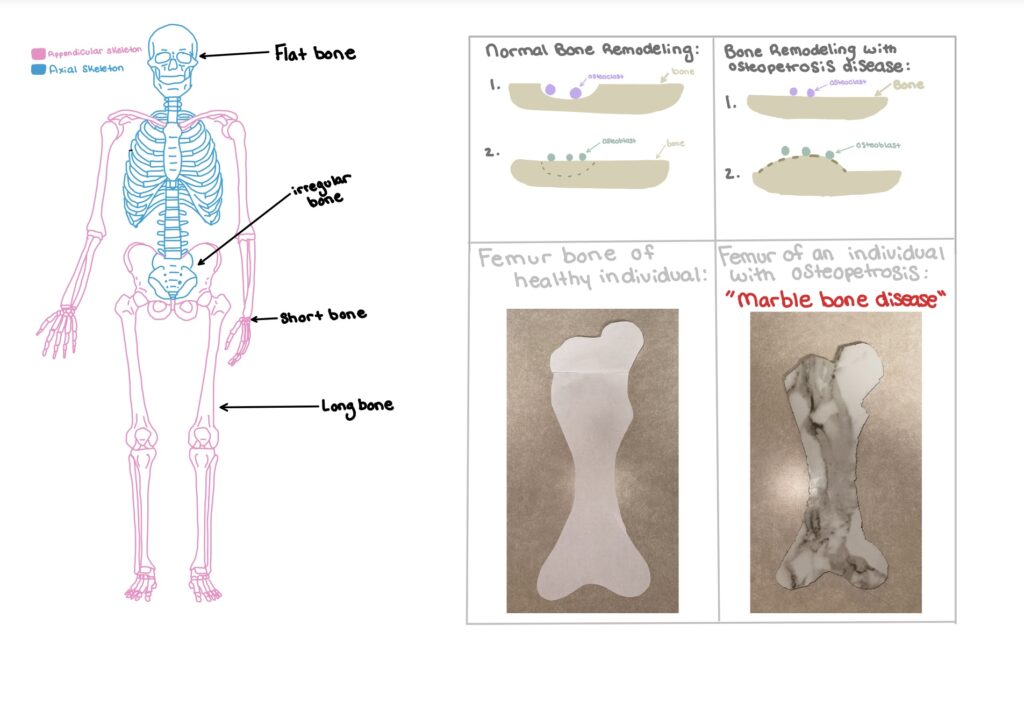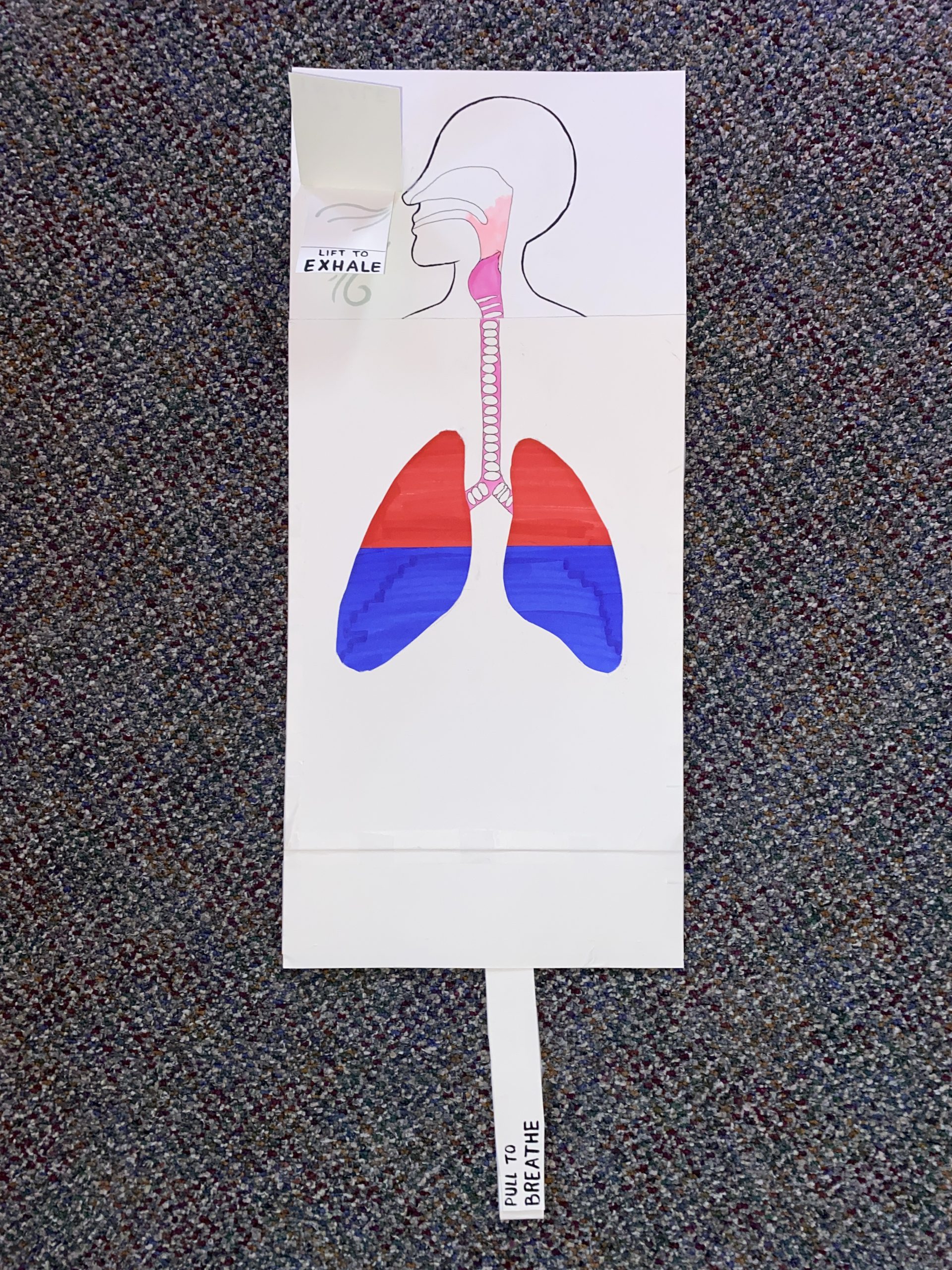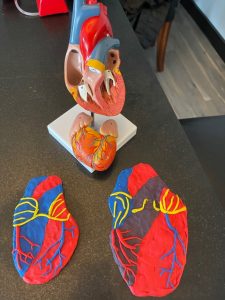


This video is a representation of how periodontitis bacteria sticks to the lungs. The bottle represents the body, the straw is the esophagus, sponges are the lungs, and glitter represents the periodontits bacteria. Periodontitis is bacteria that forms in the mouth and deteriates the soft tissue in the gums. Periodontitis also causes and triggers many other issues in the body, an example would be when you swallow what is in your mouth, the bacteria floats down with what you are swallowing and goes through your body system. This bacteria could end up in your lungs and make you prone to respiratory infections such as pneumonia and bronchitis.
One CommentThe objective of my STEAM project is “relate how the lymphatic system can cause disease.” I would like to discuss the topic of oral cancer and the lymph node relationship that can exist with oral cancer. I will discuss oral cancer statistics, symptoms, what the lymph nodes tell us about patients with oral cancer and finally treatments and recommendations for oral cancer. For my project I have painted my friend Sarah’s face. I have painted the muscles red and pink, the nerves blue, the submandibular and parotid glands are yellow and the lymph nodes are shown in green. I wanted to show the location of the lymph nodes in relation to the maxilla and mandible. The proximity of the oral cavity to the lymph nodes in the head and neck is a contributing factor to the ease of spread.
All cancer has the potential to be deadly but Oral Cancer is one not talked about as much in the United States. Approximately 30% of head and neck cancers are represented by tumors arising in the oral cavity with 95% being composed of squamous cell carcinoma (SCC) (Tsai). Cancer arising in the head and neck region is the 6th most common malignancy worldwide, being diagnosed more than half a million patients per year. In the US 23,840 cases will be newly diagnosed this year and an estimated 5470 will die from this disease (Kim). Cancer in the oral cavity mostly appears on the tongue. The presentation is a red or white patch that does not heal or disappear. The most affected sites are the tongue, inferior lips and floor of the mouth (Doshi). Other symptoms include, mouth pain, a persistent sore throat or even a bump on the tonsils or neck.
A later finding of oral cancer is swollen lymph nodes. When the lymph nodes of the neck are swollen, this is a signal that the cancer has spread to the lymph tissue. Lymph nodes exist all over the body; there are over 300 in just the head and neck alone. Oral squamous cell carcinoma has a great predisposition to produce metastasis in lymph nodes (Bugshan). The primary lymph nodes we see metastasized are the ones located in the neck region. There have been several studies performed on what the oral cancer associated lymph node metastases tells us and the research states that “The most common site for OSCC metastasis is cervical lymph nodes, and it reduces the survival rate by 50%” (Bugshan) In other words, if the cancer has spread to the lymph nodes, the chances of survival are lower. This is because by the time the oral cancer has spread to the lymph nodes, it is usually in the later stages, “Oral squamous cell carcinoma, may be accompanied with cervical lymph node metastases in advanced stages” (Koerdt) Of course there are other factors involved with survival rate of Oral Cancer such as “clinical stage at diagnosis, tumor size and invasion depth, and histological type” (Patel)
Additionally, “Lymph node density can potentially assist in identifying patients with poor outcomes and therefore for whom more aggressive adjuvant treatment is needed. Lymph node density is the number of positive lymph nodes/total number of excised lymph nodes (Patel) Researcher S G Pastel has concluded that the number of infected lymph nodes can help determine the path of treatment because it is a sign of severity.
In clinical practice, the treatment plan and prognosis of oral squamous cell carcinoma is mainly based on the primary tumor, regional lymph node metastasis, and distant metastasis (TNM) staging system (Doshi). Treatment can include a glossectomy, chemo and radiation therapies. A glossectomy is a procedure in which the tongue is reconstructed from tissue from other parts of the body.
Finally, it is recommended to get oral cancer screenings yearly at your local dentist office. “A thorough head and neck lymph node inspection and palpation for all first-time patients should be performed to help in early detection of cancer, which will increase the chances for successful treatment and improve prognosis” (Bugshan). Additionally, if you feel that you have a suspicious lesion in your mouth, you should go to your dentist for further examination.
Among the most prevalent disorders affecting the neurological system in the elder persons, epilepsy ranks 2nd only to stroke and demnetia. Old age epilepsy, which begins before the age of 60 and continues into old age, and new-onset epilepsy in the elderly are both included in geriatric epilepsy. Older adults’ quality of life is greatly diminished and societal health care resource burden is amplified by epilepsy, particularly late-onset epilepsy.The risk of acquiring epilepsy and seizures is highest among the elderly. Seizures and epilepsy are more common in those aged 60 and up compared to younger age groups. An estimated 85 per 100,000 for those aged 65–69, 159 per 100,000 for those aged 80 and more, and 80.8 per 100,000 for all age groups is the yearly incidence.According to a recent epidemiological study, there is an average of 240 cases of epilepsy per 100,000 people aged 65 and up per year. It is in the elderly that about 25% of cases of new-onset epilepsy develop. By 2020, half of all persons with new-onset epilepsy will be old, according to some researchers. (Lü et al., 2016)
Epilepsy and Seizures in Untreated Alzheimer’s Disease
Clinical seizures will emerge in a small percentage of AD patients over the course of the disease, but this has been known for decades. Between 1.5% and 64.0% of AD patients experienced an unprovoked seizure, according to both prospective and retrospective investigations [7–19]. The proportions tend to be lower, according to more recent, bigger, prospective research. There was a greater incidence of first seizure among individuals with clinically diagnosed Alzheimer’s disease compared to nondemented patients, with an odds ratio of approximately 6, in a study that examined all patients over the age of 55 in Rochester, Minnesota, who had their first unprovoked seizure between 1955 and 1984.
Seizures and epilepsy in families with AD
After taking disease duration and severity into consideration, it is unclear if the prevalence of seizures is higher in family instances compared to random cases, and not all affected individuals appear to have seizures. In a study including familial AD caused by presenilin-2 mutations, 30% of patients experienced seizures.Amyloid precursor protein (APP) duplications are associated with an increased risk of seizures; in fact, 57 percent of those affected in one research including five families had seizures.
Emergence of epilepsy in the elderly due to acquired factors
Brain Activity and Epilepsy
Epileptiform surface Seizures and other EEG abnormalities in Alzheimer’s disease patients, are rare. Few AD seizure observational studies provided EEG results, and many patients were not tested . In these trials, some seizure patients and those without seizures had epileptiform discharges. Few research have explored epileptiform discharges in AD/dementia patients. examined 1674 memory problems clinic patients’ regular EEGs. Epileptiform discharges (spikes or sharp waves) were identified in 3%, 26% of whom had epilepsy. Most discharges were focused and temporal. On discharge, 25% of patients had no clinical indication of epilepsy. Follow-up seizures were documented in two (17%) of this small sample. In another study, severe AD patients and ApoE4-positive relatives had elevated theta and delta activity and strong waves on their EEGs . The incidence and localization of epileptiform anomalies were not reported, and the authors did not provide examples. Epileptiform discharges are rare in AD and memory clinic patients, even in those with seizures, which may be because elderly people are less likely to exhibit interictal discharges on normal EEGs . Only 36% of new-onset epilepsy patients in an elderly cohort had such discharges .
Generalized convulsions
SE is a neurological emergency characterized by seizures characterized by convulsions without full awareness recovery lasting more than 10 minutes. In practical practice, elderly SE is prevalent. In a retrospective analysis, 7.5% of 60-year-olds had SE.69 Drug use is often linked to SE. SE can develop in 15% of drug-induced seizures, especially with antibiotics.( Friedman et al., 2011)
Penicillins, cephalosporins, carbapenems, and quinolones can cause SE, especially when given intravenously in individuals with liver or kidney disease at high doses. Inhibitors of benzodiazepine and gamma-aminobutyric acid receptors include quinolones and beta-lactam antibiotics, respectively cause epileptogenesis from N-methyl-D-aspartate Cephalosporins including ceftriaxone, ceftazidime, cefotaxime, and cefepime can cause SE. Ipenem causes more seizures than meropenem. SE has been recorded with ciprofloxacin, ofloxacin, and gatifloxacin.
In renally impaired patients, prevent seizures when used with the appropriate dosage of an antibiotic with a low epileptogenic potential. Patients at risk of seizures due to central nervous system lesions and renal or hepatic impairment may benefit from aminoglycosides, azithromycin, vancomycin, clindamycin, or teicoplanin, since these medications have no SE reports.
Refrence:
Lü, Y., Liu, S., & Yu, W. (2016). The causes of new-onset epilepsy and seizures in the elderly. Neuropsychiatric Disease and Treatment, 12, 1425.
Friedman, D., Honig, L. S., & Scarmeas, N. (2011). Seizures and Epilepsy in Alzheimer’s Disease. CNS Neuroscience & Therapeutics, 18(4), 285–294.




I originally had this as an animated gif, but this cite doesn’t allow an upload. I did the identification and treatment of thyroid nodules, so I chose to depict the growth of one of these nodules. This corresponds with our endocrine unit, seeing as the thyroid is such an integral hormonal organ.
One CommentOsteopetrosis, “the marble bone disease” affects about 1 in 100,000 to 500,000 individuals each year. Osteopetrosis is a rare disorder that causes bones to grow abnormally and become overly dense. When these bones become overly dense, or “marble-like” they become brittle and can fracture easily. During bone remodeling, the old bone is removed or resorbed by the osteoclast cells, and osteoblasts form new bone. However this process does not work for individuals with osteopetrosis. Instead, the old bone is not removed or resorbed, as the new bone is formed.
**There is suppose to be a video included in this post, but WordPress won’t allow me to upload, so here is the material that was included in the video:

One Comment
My STEAM project was about the Wim Hof Breathing Technique. His breathing technique is said to have many health benefits when practiced with time and commitment. The piece of art I made is an interactive piece. Much like a children’s book. The pull tab at the bottom represents breathing and the little flip tabs up top are for inhaling and exhaling. I took a video of this, but was having trouble uploading it, so email me if you would like to see it in action.

One Comment
https://media.uaf.edu/media/t/1_ktuew8u9

My steam project is on valvular heart disease. I describe the pathway of blood through the heart and circulatory system and diseases of heart valves that affect this blood flow. This picture shows a healthy non-diseased heart next to an enlarged heart with a leaky pulmonary valve. The link above is how to access a video I recorded to describe both hearts.
One CommentThis is my Presentation on Designing instructions for different movements. I chose to demonstrate this by relating it to lifts and exercises common in the gym and why they work within different workout programs.
TJ;, Eng CM;Azizi E;Roberts. “Structural Determinants of Muscle Gearing During Dynamic Contractions.” Integrative and Comparative Biology, U.S. National Library of Medicine, pubmed.ncbi.nlm.nih.gov/29889236/.
Roberts TJ;Eng CM;Sleboda DA;Holt NC;Brainerd EL;Stover KK;Marsh RL;Azizi E; “The Multi-Scale, Three-Dimensional Nature of Skeletal Muscle Contraction.” Physiology (Bethesda, Md.), U.S. National Library of Medicine, pubmed.ncbi.nlm.nih.gov/31577172/.
Pham, Steven. “Physiology, Skeletal Muscle Contraction.” StatPearls [Internet]., U.S. National Library of Medicine, 21 June 2020, www.ncbi.nlm.nih.gov/books/NBK559006/.
The red cake illustrates a normal functioning heart. The black cake demonstrates a heart that has experienced a heart attack. The color black, shows that blood clots have blocked the blood flow to the heart. The cut piece illustrates loss of tissue and damage.
One Comment